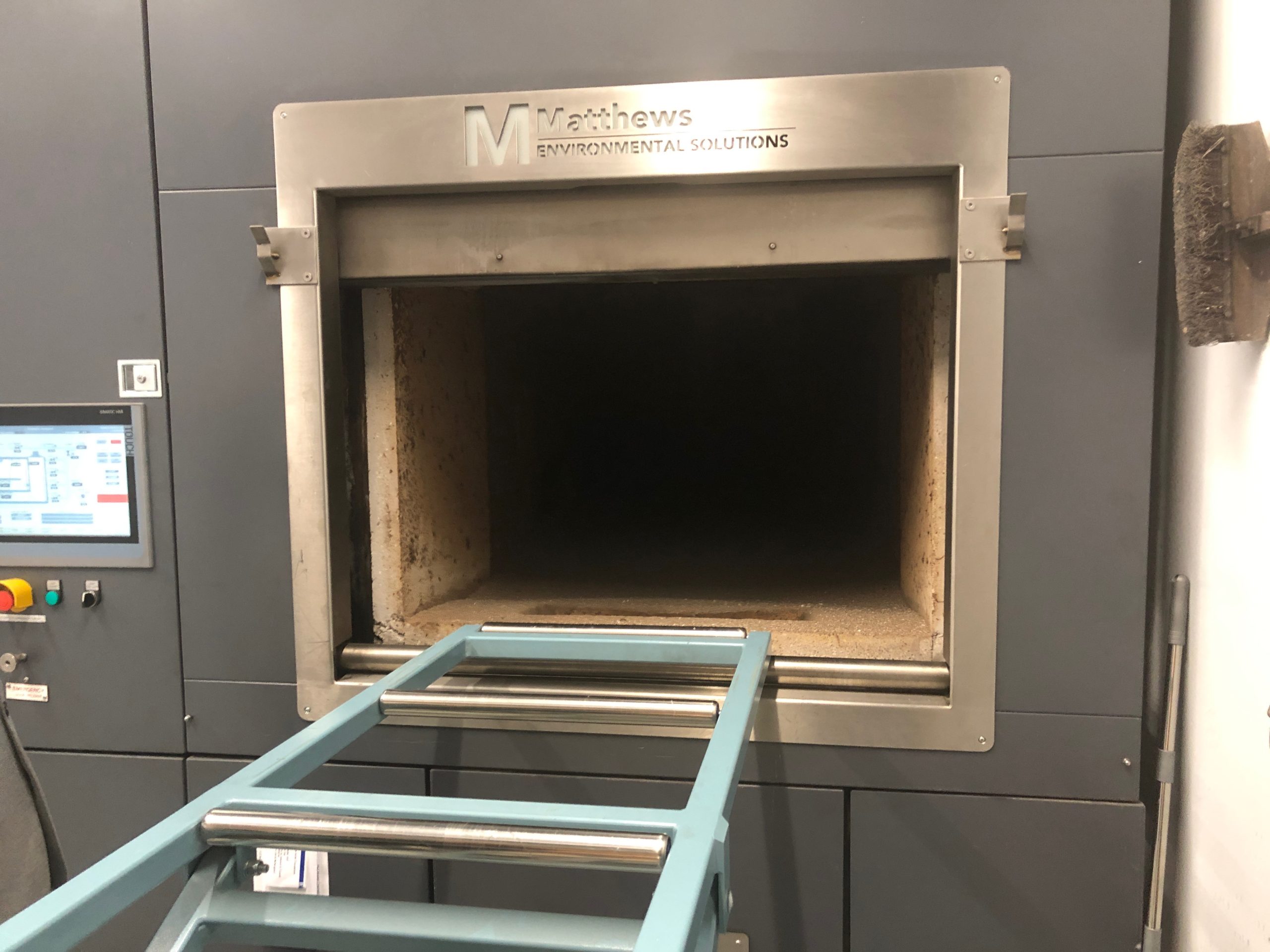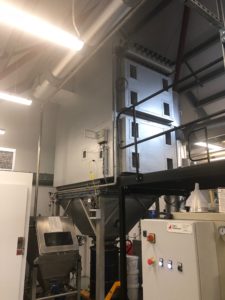

There is one way which we can decide ‘how to go’. Yes, there is burial – both in a coffin or natural; there is aquamation or terramation – neither of which are really available tin the UK currently; or cremation. But when we visit a crematorium we may only see the reflective ‘spiritual’ aspect. (When I refer here to spiritual that does not wholly mean religious). So if we were to be cremated, what goes on beyond the Cremation service?
Visibility

The Hurlet Crematorium Open Day on Saturday 25 March allowed visibility not only of the sanctuary, where we all can collectively remember our loved one, and say our good byes, but the rest of the facility. This is something we could ask for, not just waiting for an Open Day. To the left of the main sanctuary is a room which allows visibility of the rest of what happens. It offers dignity for the family who wish to observe the final cremation.
The coffin, upon a check of identification, is allowed passage into the ‘oven’ or cremator. It is never identified as a ‘coffin’ but the person. If it was felt appropriate to the family, for example with Hindu’s, a family member would be allowed to help ensure that the loved one was helped into the oven.
What might be stopping us from asking for this option?
It might be that any of us might wish to ‘walk alongside our loved one’ for that journey. What might that mean for the loved one, or to us?
The actual Cremation

Within the oven there are various chambers to ensure efficient heating. At the bottom of the chamber, there is an aperture where, upon complete burning (around 90 minutes), the ashes are drawn back to fall within, so that the ashes may be collected.
Being thorough
From there, a magnet is used to draw out any fragments which are magnetic. These could be bone joints etc which can be recycled. The family may also wish to have these returned as well.

The remains then enter into a cremulator, where they are ground into a fine dust. These are then placed into a sealed paper bag which then goes into a burgundy box. It is this box which can be offered to the family, normally by the undertaker. The ashes might be used as part of jewellery or sent to different members of the family – who live some distance apart – so that each could scatter the ashes, as they deem appropriate.
Climate sensitivity
A major upgrade to crematoriums now is the filtering process to ensure that no inadvertent atmospheric discharge occurs. Agreed, the heating element, the use of gas, are all concerns with regard to cremation; thus aquamation, terramation and natural burials have some advantages in this respect.

All that leaves the Crematorium via the discharge flume is CO2. This does not give sufficient description to the whole process of carefully managing the temperature and burning so to prevent a discharge of noxious gases to the atmosphere. At the Hurlet they also plant a tree for each person cremated, to offset the CO2 discharged. Albeit that the tree would have to grow for a few generations to absorb that discharge.
Your thoughts
This was a challenging but powerful experience. We might hesitate to attend such an Open day, although we might ask ourselves whether we are denying ourselves that opportunity to understand more and whether we could support our loved one on that part of the journey as well.
What questions might you have about this process? Our next Death Cafe is on Tuesday 4th April between 12-1pm at Pollokshaws Methodist Church (G431LH). All are welcome.
I found the dialogue interesting and I enjoyed it
Most informative and thought provoking as to whether one would like to support a loved one on these final steps at their journey’s end into the actual crematorium oven.
Yes the senior member of the Hindu family would place their hand on the coffin, not necessarily to push it into the cremator, but to be with them still. That offer would be open to us all. Possibly the hardest part might be allowing us to break from the tradition we come to expect, and to go with our heart. Still very challenging
Well I’d never heard of aquamation or terramation. Interesting. I am concerned about the ads of those who want to save their families from what is esssntially a key part of the grieving process. Robbing them of a funeral, with all that entails and the chance to gather with other loved ones and have closure. Interesting article.
I’ve not seen those ads you mention. Could you elaborate? Surely not connected with aquamation not terramation. There’s a blog about those here as well